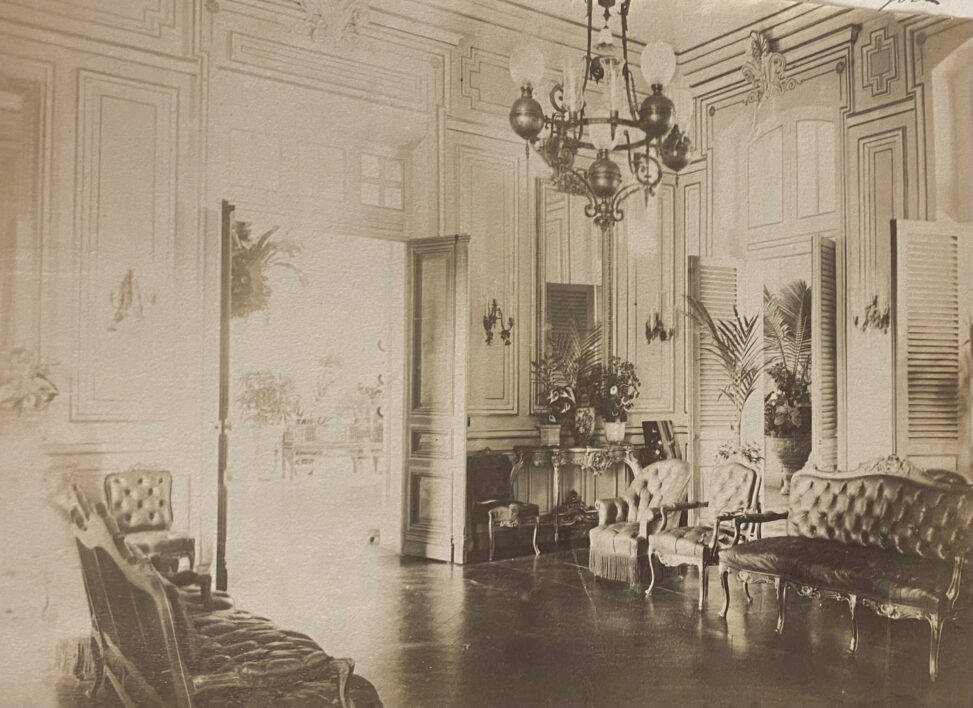Original Title: Photograph Album of Colonial French Indochina, 1890-1900
Year: 1890-1900
Location: French Indochina
Photographer: French colonial resident of the area
Throughout history, thousands of photographs have been taken in order to capture a single moment in history. These photos can be used simultaneously to infer information from the past and provide insight into the present and future states of either the people or the location in the photograph. With the advancement of technology, photographs are now able to be archived in a database and accessed anywhere in the world. Exploration of the University of Colorado’s Special Archives Database led me to the discovery of the photograph originally titled “Photograph Album of Colonial French Indochina, 1890-1900”. After careful analysis of this historical image, it is clear that both the French colonizers and the indigenous citizens during the time period this photo was taken would have had vastly different interpretations of this one photo. By examining this one photo from dual perspectives, one can gain a more complete understanding of the different views of France’s colonization of Indochina.
The first step in understanding the dual perspectives this image had for Indochina locals and for French colonizers is to do a basic analysis of the picture. This photograph depicts a large, extravagant room, presumably in the house of one of the French colonizers. The architecture of the room is distinctly European, with clean, symmetrical lines and heavy use of white walls. Decorating the walls are fleur-de-lis. There are multiple leather chairs and couches which are shiny and in pristine condition. One of the chairs is decorated with fringe on the bottom and most of the seating has engraved wooden features with delicate detailing. A chandelier hangs above, with multiple lights attached to help illuminate the large room. Other details that indicate wealth are the ornate table in one of the corners and the many lush potted plants. As for the actual structure of the room, it is very open, with multiple doors leading to other rooms of the house. Based on the analysis of this photo and current knowledge, the thoughts and feelings this photo would evoke for the French colonizers and the indigenous people of Indochina would be very different.
The French colonizers would view this image very favorably. The photo of this grand French-style room serves as a symbol of France’s power and goal of modernizing Indochina. French colonizers believed themselves to be superior to the indigenous natives of the region and saw Asia as underdeveloped and dirty. One of their main claims for colonizing Indochina was that European interference could “help” inferior Asia. From this photograph, these feelings of superiority and helpfulness would be amplified. A French colonizer could claim that by partaking in this “civilizing mission” they were able to take a backwater place such as Indochina and transform it into a suitable place worthy of French citizens to live (Noor, 2017). By adding European influences throughout the nation such as with the architecture, this image would elicit a sense of pride for French colonizers because it showed that with their influence, they were able to modernize an uncivilized country. The photographer of this photo was a French colonial resident, so the way they took the photo probably reflected their institutional bias (Peabody, 2016). They wouldn’t have wanted to show the French photos of dirty locals or of problems the colonizers faced while in Asia such as rats carrying the bubonic plague due to the sewer infrastructure (Maunz, 2017). They would have wanted to capture a grand, modern-looking room in a house in order to show the French back home the power they held even overseas.
Compared to the view held by the French colonizers, the natives of Indochina would have had a very different perspective of the photograph. For them, this photograph would cause them to feel anger. By seeing a photo that showed how the French colonizers were living a life of luxury in their country, a native viewer may feel the hatred that they are the ones doing back-breaking work for the French, only for the French to reap the benefits. They would find this image to be hypocritical of the French’s promise to “help” Indochina” towards modernity because only a small section of the country would be modernized, and it would only be for French colonizers that moved to Indochina (Meisler, 2001). While the French colonizers got to live in spacious, beautiful homes, the locals were forced to live in crowded, dirty quarters. The natives of Indochina were likely plagued with thoughts such as “Why can’t we Asians also have these nice things” by looking at photographs similar to this one.
Examination of this photo from two drastically different perspectives has proven that even photographs as old as this one can help those of us in the present day learn and understand different views of people from long ago.
Citations
Maunz, S. (2017, June 6). The Great Hanoi Rat Massacre of 1902 Did Not Go as Planned. Atlas Obscura. https://www.atlasobscura.com/articles/hanoi-rat-massacre-1902
Meisler, S. (2001, November 25). Traces of the French in Hanoi. StanleyMeisler.com. https://www.stanleymeisler.com/article/traces-of-the-french-in-hanoi
Noor, F. A. (2017). Where Do We Begin? Reclaiming and Reviving Southeast Asia’s Shared Histories and Geographies. In A. Baviera & L. Maramis (Eds.), Building ASEAN Community: Political-Security and Socio-cultural Reflections (volume 4., pp.247-257). Economic Research Institute for ASEAN and East Asia
Peabody, R. (2016, February 10). What is the Future of the Photo Archive?. Getty. https://blogs.getty.edu/iris/what-is-the-future-of-the-photo-archive/
